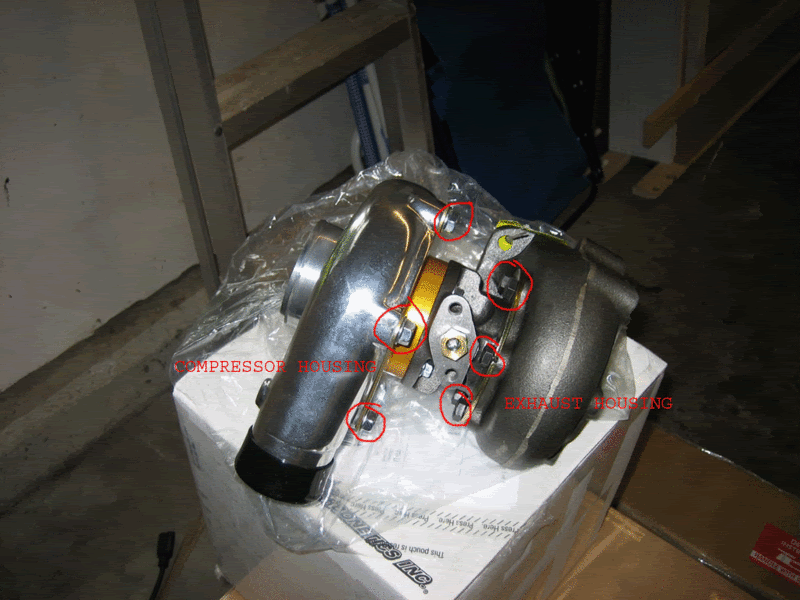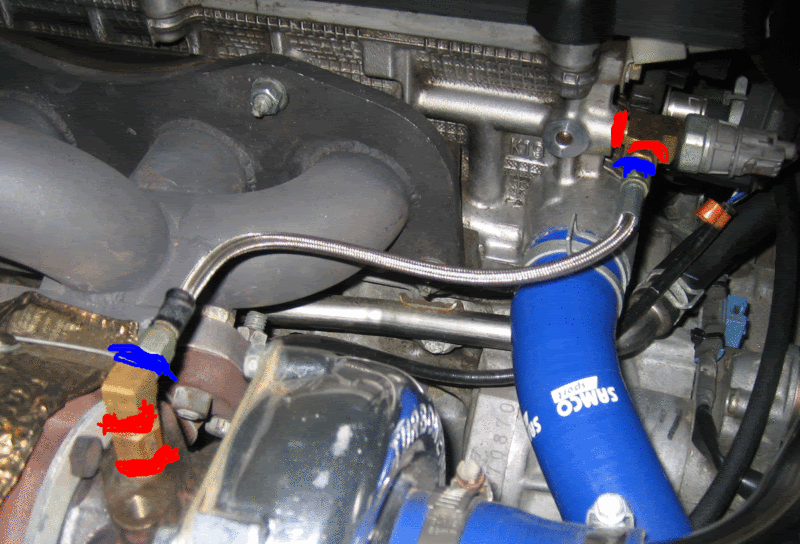Need Tech Info? Dezod's got it!
#24
Senior Member




Scion Justice League of America
SL Member
Joined: Apr 2005
Posts: 5,594
From: Portland, Oregon
NPT sealant is used on high pressure lines, such as the vaccum lines (if you use NPT fitting equipped lines), Nitrous Lines, or most probably, in this case, oil lines with NPT fittings...
#27
I don't even use the sealant on the NPT fittings. RTV sealant is a MUST for the oil pan, and all brass fittings having anything to do with oil. For the NPT lines, use the NPT thread sealant. I use the red silicone found at your local Pep Boys/Auto Zone. That'll take care of everything but the oil feed line (hence the NPT thread sealant  ). Cheers!
). Cheers!
PS - Sorry it took so long to answer, I somehow missed this thread lol.
 ). Cheers!
). Cheers!PS - Sorry it took so long to answer, I somehow missed this thread lol.
#28
Originally Posted by Joe_Dezod
I don't even use the sealant on the NPT fittings. RTV sealant is a MUST for the oil pan, and all brass fittings having anything to do with oil. For the NPT lines, use the NPT thread sealant. I use the red silicone found at your local Pep Boys/Auto Zone. That'll take care of everything but the oil feed line (hence the NPT thread sealant  ). Cheers!
). Cheers!
PS - Sorry it took so long to answer, I somehow missed this thread lol.
 ). Cheers!
). Cheers!PS - Sorry it took so long to answer, I somehow missed this thread lol.
#29
Cool deal. So to clear up, any and all fitting dealing with oil, use the high temp RTV? The pan of course in a given. So also use the RTV on the pan fitting, the oil feed fitting where the oil pressure sending unit is, and the feed and return fittings on the turbo itself? That's all the fittings i have in mind. What NPT lines are there?
#30
The only NPT line is the actual stainless line that connects the brass T to the turbo itself. That's the only thing you'd use the NPT sealant on. For that SAME brass T, use the red sealant for the part that threads into the block (both the adapter and the T), and sealnt on the brass part that screws into the turbo (not the part where the oil feed goes to the turbo. If you want to, I can send you another lil one of my famous pictures I've hooked you up with that makes it completely fool proof  .
.
 .
.
#36
Originally Posted by satoman44
uh, i used red rtv sealant at all those connections...is that bad?
#37
Hey Joe, i'ma post up the PM you sent me about clocking the turbo just to help anyone else that reads this thread:
All you do is loosen all the bolts on each side to adjust the rotational position of that side. In the end, you need your oil feed at the dead top, or near top, and the oil return, to be pointing as straight down as possible. Adjusting in the engine bay is the best way. Bascially, assemble the turbo to the manifold and down pipe, and bolt in the wastegate. You do not need to bolt the wastegate to the down pipe yet. With all the bolts to clock the turbo (on both sides) loosened, put the assembly in the engine bay, and hand tighten a couple nuts on the top of the manifold on to hold the assembly in place so you can make adjustments. When you find the position you want need, tighten a couple bolts on each side to keep the units from rotating, then take the assembly out. You can then tighten the rest of the nuts on the assembly, install the o2 sensor, bolt the recir flange from the down pipe to the wastegate, and install the oil feed and return fittings.

All you do is loosen all the bolts on each side to adjust the rotational position of that side. In the end, you need your oil feed at the dead top, or near top, and the oil return, to be pointing as straight down as possible. Adjusting in the engine bay is the best way. Bascially, assemble the turbo to the manifold and down pipe, and bolt in the wastegate. You do not need to bolt the wastegate to the down pipe yet. With all the bolts to clock the turbo (on both sides) loosened, put the assembly in the engine bay, and hand tighten a couple nuts on the top of the manifold on to hold the assembly in place so you can make adjustments. When you find the position you want need, tighten a couple bolts on each side to keep the units from rotating, then take the assembly out. You can then tighten the rest of the nuts on the assembly, install the o2 sensor, bolt the recir flange from the down pipe to the wastegate, and install the oil feed and return fittings.

#38
Luckily you can remove the sealant because it's not adhesive based. If you're goign to unscrew it, make sure you get every bit of it off, because you don't want a small chunk left preventing a perfect seal.
And you're correct about the thread sealant. It's just an extra precaution. I've never used the sealant myself, on my turbo civic, my evo, or my tC.
Glad that helped guys!
And you're correct about the thread sealant. It's just an extra precaution. I've never used the sealant myself, on my turbo civic, my evo, or my tC.
Glad that helped guys!
#39
Haha thanks man! Sorry in advance guys. When it gets late my grammar and spell check call it a night early, and I don't make much sense. If you guys need me to clear anything up for you let myself or Paul know!



